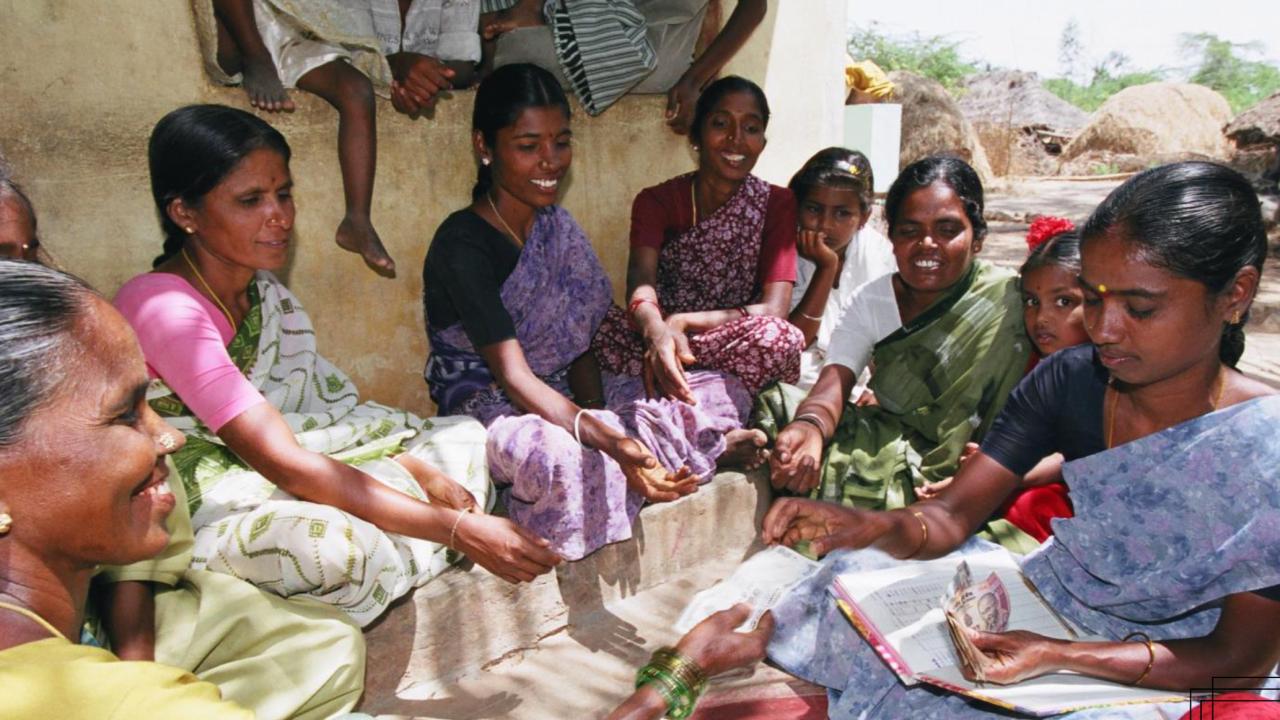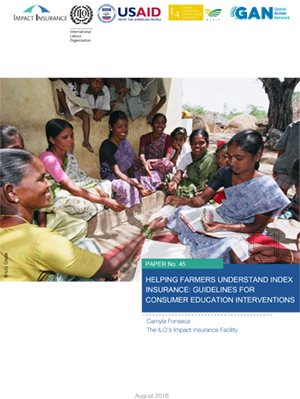
Index-based insurance is an innovative financial service that can help smallholder farmers manage some of the risks related to weather conditions. On one hand, the increasing availability of this financial service offers a big opportunity to both farmers and providers. On the other hand, the complexity of this risk management tool can lead to poorly-understood index insurance products that may do more harm than good.
 Considering the lessons and insights gathered from index insurance and financial education projects, as well as from the field of behavioral economics, the Global Action Network to advance agriculture insurance (GAN), coordinated by the International Labour Organisation's Impact Insurance Facility and the AMA Innovation Lab, supported by the United States Agency for International Development (USAID), has worked to put together guidelines for index insurance education to support the industry to deal with this task.
Considering the lessons and insights gathered from index insurance and financial education projects, as well as from the field of behavioral economics, the Global Action Network to advance agriculture insurance (GAN), coordinated by the International Labour Organisation's Impact Insurance Facility and the AMA Innovation Lab, supported by the United States Agency for International Development (USAID), has worked to put together guidelines for index insurance education to support the industry to deal with this task.
Throughout the guidelines, we emphasize the need to focus on teachable moments, learning by doing, and making learning fun and interactive. This is important for helping farmers acquire knowledge to overcome the knowledge-doing gap.
1. Start with raising farmers' awareness and building trust in index insurance
A cost-effective way to raise awareness and build trust is through mass communication channels. Mass media is more likely to reach people who would not actively seek insurance education and who are illiterate. Additionally, TV and radio are considered trustworthy and generally entertaining. Content delivered through mobile phones, via SMS or voice messages, and edutainment videos also have the potential to reach wide audiences in a cost-effective manner.
2. Build farmers' knowledge of index insurance through high-touch interventions
Awareness and trust are not enough. Farmers also have the need for more complex education to help them identify risks, understand the concept of insurance and index insurance, compare different risk management strategies and conceive an optimal strategy to manage their risks. Topics for discussion may include: type of index and index construction, trigger levels, risks and crops covered, benefits, and compensation calculation.
Farmers should be made aware that payouts are based on an index rather than on individual losses and that they may be over or under compensated depending on the actual losses suffered. High-touch methods, such as workshops, are often more appropriate to transmit this kind of complex information and allow the usage of simulation techniques that can help with knowledge retention.
3. Promote responsible selling
Quality information is important for farmers when making decisions about insurance. However, in some cases, the staff of companies and distribution channels have little knowledge about index insurance concepts or fail to convey it clearly. Interventions to improve responsible selling should concentrate on developing risk management and index insurance-related materials that will fill in staff knowledge gaps.
4. Identify national/regional initiatives to collaborate with
It is important for stakeholders investing in index insurance education not to stay isolated. By mapping existing initiatives on the national or regional level, they can identify partnership opportunities. Establishing linkages to social programs, government financial education initiatives or academic curricula can ensure that the insurance sector contributes with knowledge on risk management and insurance-related content.
5. Link education with valuable products available on the market
Better awareness and knowledge of insurance do not always translate into behavioral changes. To stimulate risk-averse behavior, stakeholders should consider the different constraints that prevent people from purchasing index insurance. One strategy is to try to minimize the delay between a farmer's decision to act and the action itself by conducting interventions right before or during the sales window.
6. Establish an M&E strategy from the start
Implementing a good monitoring system is not costly and may bring high returns, since the data collected can help to refine and improve the intervention. Monitoring costs and expenditure, timeliness of action, satisfaction levels of participants and take-up rates, for example, are all basic actions that can be easily implemented. Evaluations are usually more expensive and involve more work than monitoring.
7. Pilot your intervention
A pilot test is an important step that helps to identify potential problems and unforeseen challenges before the full intervention is implemented, providing a chance to make changes quickly and cheaply. It offers an opportunity to verify the reaction of the target audience to the materials and confirm whether the content and delivery methods are suitable.
